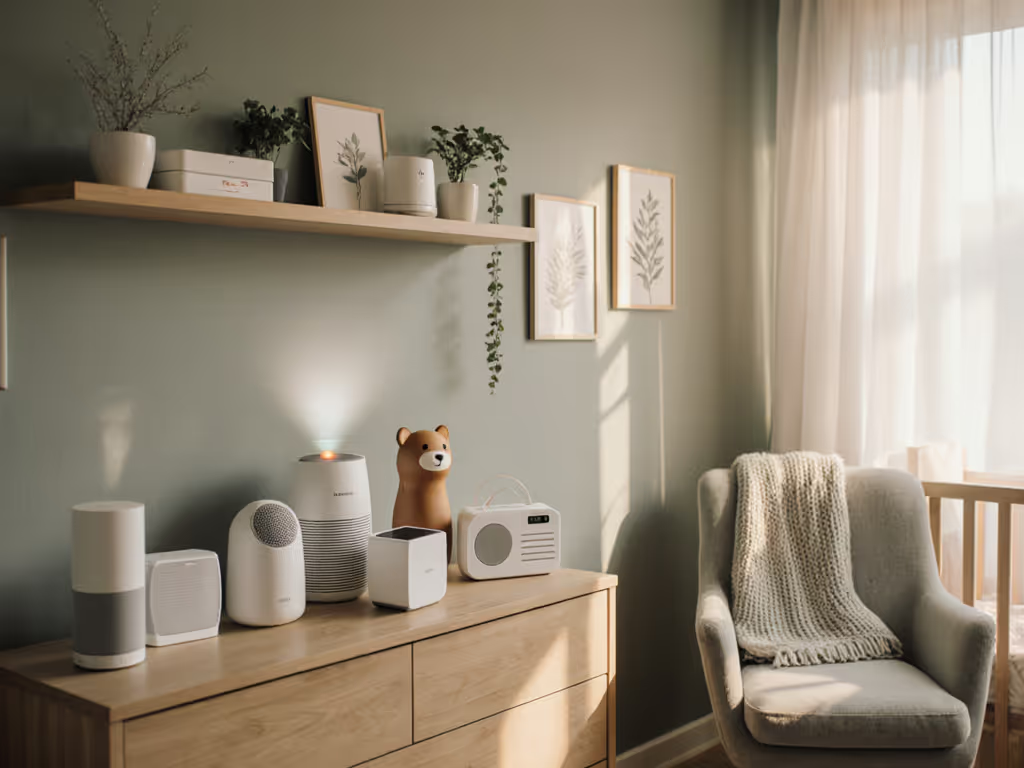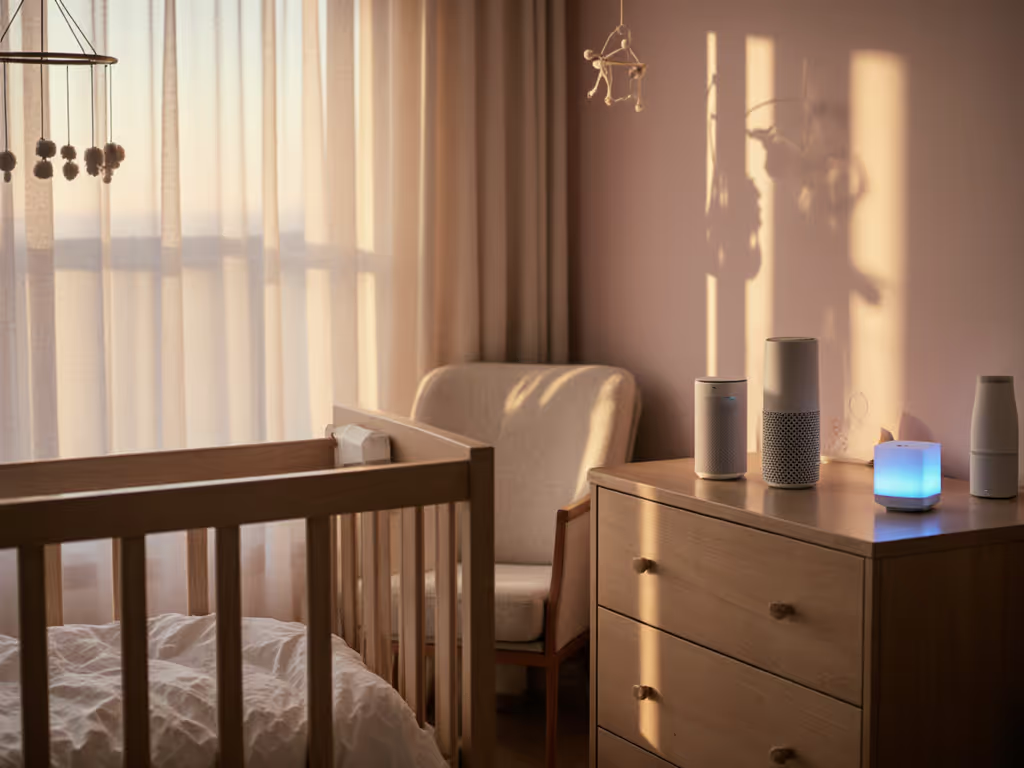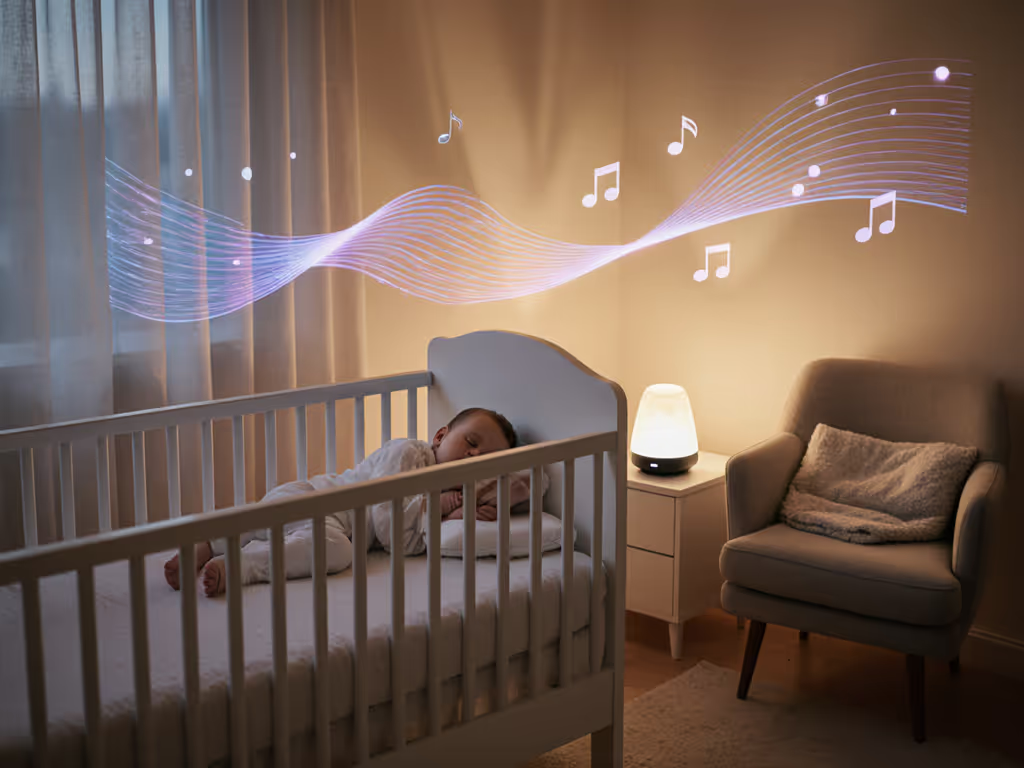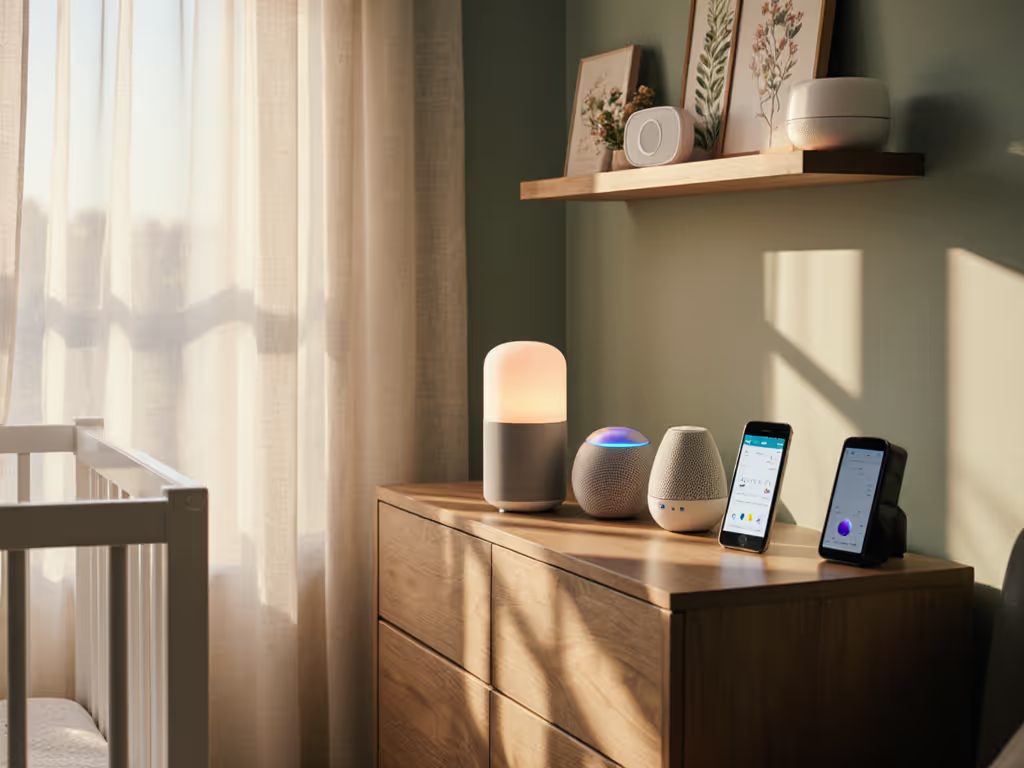
Why Decibel Levels Matter: Complete Guide for Caregivers
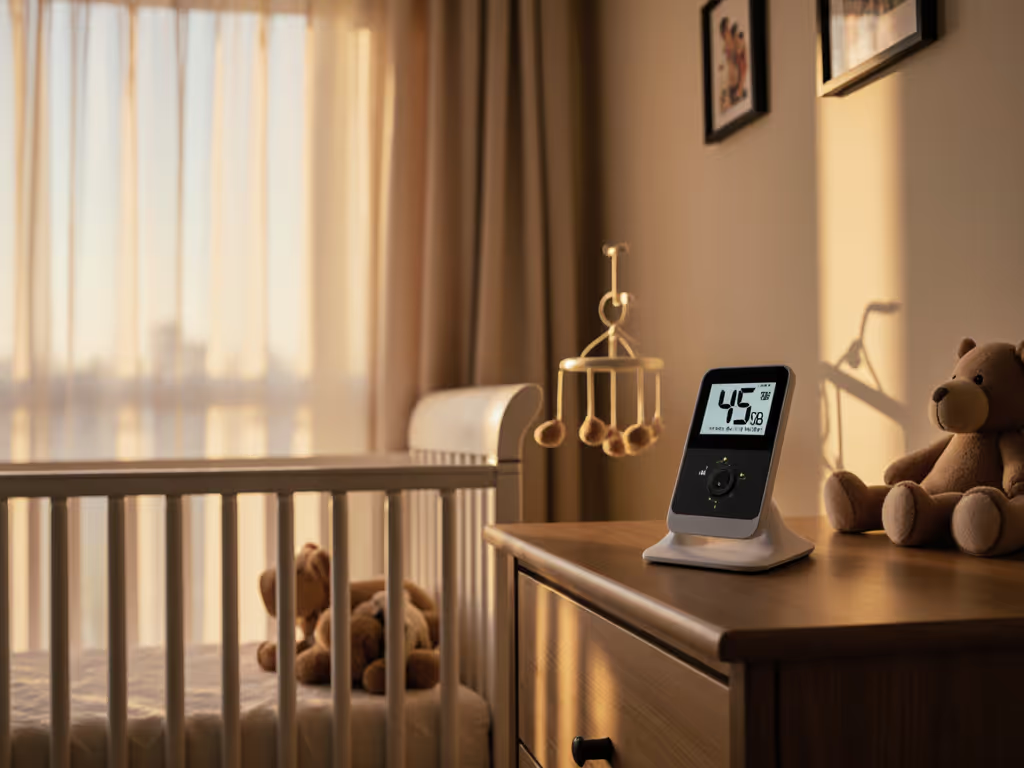
Did you know a jump from 60 to 70 decibels equals a tenfold increase in sound intensity? Even everyday noises can strain tiny ears far more than most parents realize. Baby hearing is uniquely sensitive during early growth, so understanding decibel levels matters for every caregiver. By learning how sound impacts infants, you can take simple steps that nurture safe, healthy development in your child's most important years.
Key Takeaways
| Point | Details |
|---|---|
| Safe Decibel Levels | Maintain sound levels below 60 decibels for infants to protect their developing auditory systems. |
| Impact of Noise on Development | Background noise can disrupt language acquisition and cognitive processing in infants, making sound management essential. |
| White Noise Machine Risks | Many white noise machines can exceed safe sound levels; ensure they are placed at least seven feet away and operated below 50 decibels. |
| Proactive Hearing Protection | Utilize smartphone apps for acoustic monitoring and establish quiet periods to safeguard an infant's hearing. |
What Decibel Levels Mean
Imagine sound as a language that tells a story about intensity, power, and potential impact. Decibels are the storytellers of this acoustic world, translating raw sound energy into something we can understand and measure. At its core, a decibel represents a logarithmic unit that expresses the ratio of sound pressure levels, allowing us to compare vastly different sound intensities with remarkable precision.
The human ear experiences sound in a remarkably complex way. Unlike linear measurement systems, our ears perceive sound intensity almost logarithmically - which means small increases in decibel levels can represent significant jumps in actual sound power. For instance, an increase from 60 to 70 decibels isn't just 10 units louder, but represents a 10-fold increase in sound intensity. This unique characteristic makes decibel measurements critical for understanding potential hearing risks and environmental sound exposure.
- Decibels measure sound relative to a reference point (typically 20 micropascals in air)- Different weightings like dB(A) help approximate human ear sensitivity- Logarithmic scale allows comparing sounds across dramatically different intensities
When we talk about decibel levels for infants and young children, precision matters immensely. Different sound levels can dramatically impact developing ears. A whisper might register around 30 dB, normal conversation hovers near 60 dB, while a lawn mower can blast at 90 dB - each representing a significant jump in potential auditory stress. Understanding these levels helps caregivers create safer, more comfortable acoustic environments for their little ones.
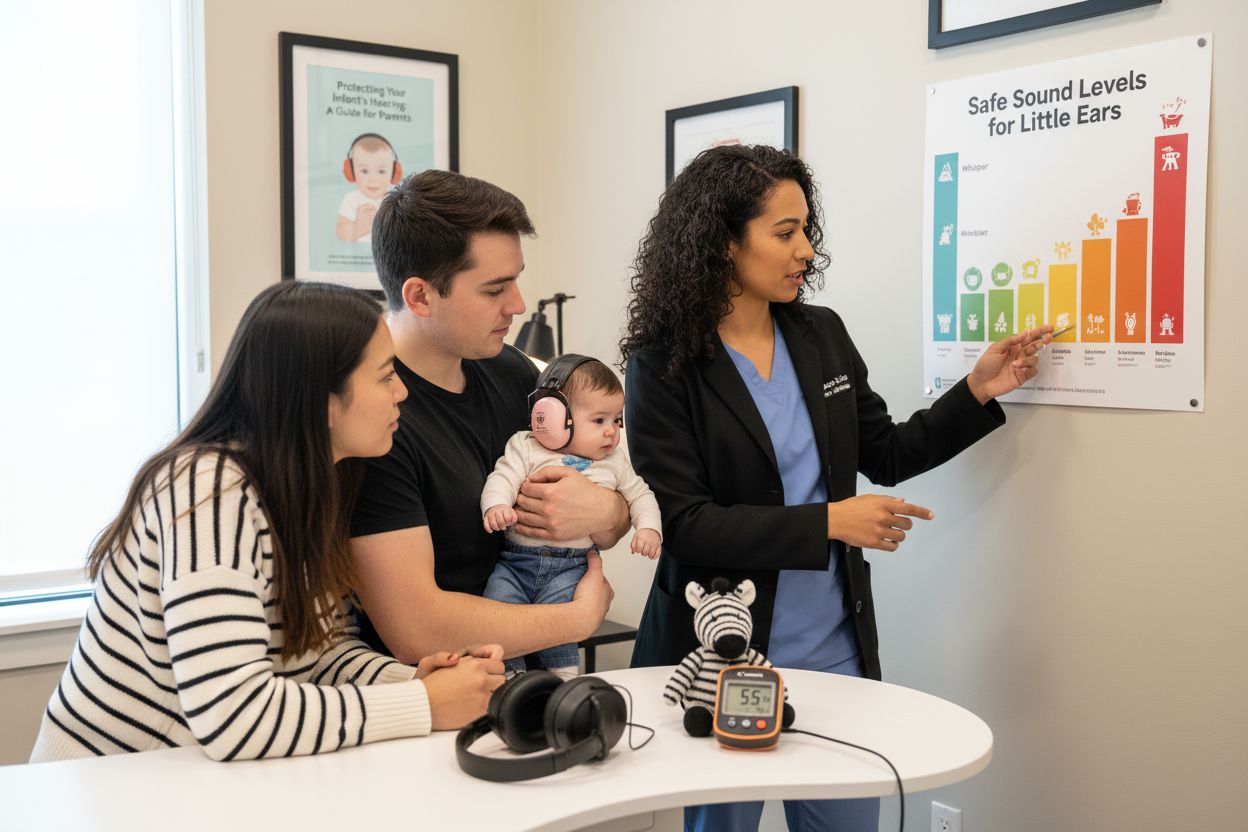
Safe Decibel Thresholds For Infants
When it comes to infant hearing protection, understanding safe sound levels isn't just technical knowledge - it's a critical aspect of protecting your baby's delicate auditory system. Experts recommend maintaining sound environments below 60 decibels for infants, which is approximately equivalent to the volume of a quiet conversation. This threshold isn't arbitrary; it's designed to prevent potential hearing damage during the most sensitive developmental stages of a child's life.
The human ear of an infant is significantly more vulnerable than an adult's. While adult ears can tolerate higher noise levels, babies' auditory systems are still developing and can be permanently damaged by prolonged exposure to loud sounds. Noise-induced hearing loss can occur rapidly in infants, making vigilant sound monitoring crucial. The National Institute for Occupational Safety and Health (NIOSH) guidelines suggest that noise exposure should not exceed 85 dB over eight hours - but for infants, the recommended safe threshold is much lower.
- Recommended maximum volume: 60 decibels
- Comparable to: Quiet conversation or soft background music
- Risk zone: Sounds above 85 dB can cause hearing damage
To put these thresholds into perspective, everyday sounds like a whisper measure around 30 dB, normal speech around 60 dB, and a lawn mower reaches 90 dB. White noise machines, often used to soothe infants, should be carefully positioned and monitored to ensure they remain within safe acoustic ranges.
 Parents can use simple sound level meter apps or dedicated devices to measure and maintain a hearing-safe environment for their little ones.
Parents can use simple sound level meter apps or dedicated devices to measure and maintain a hearing-safe environment for their little ones.
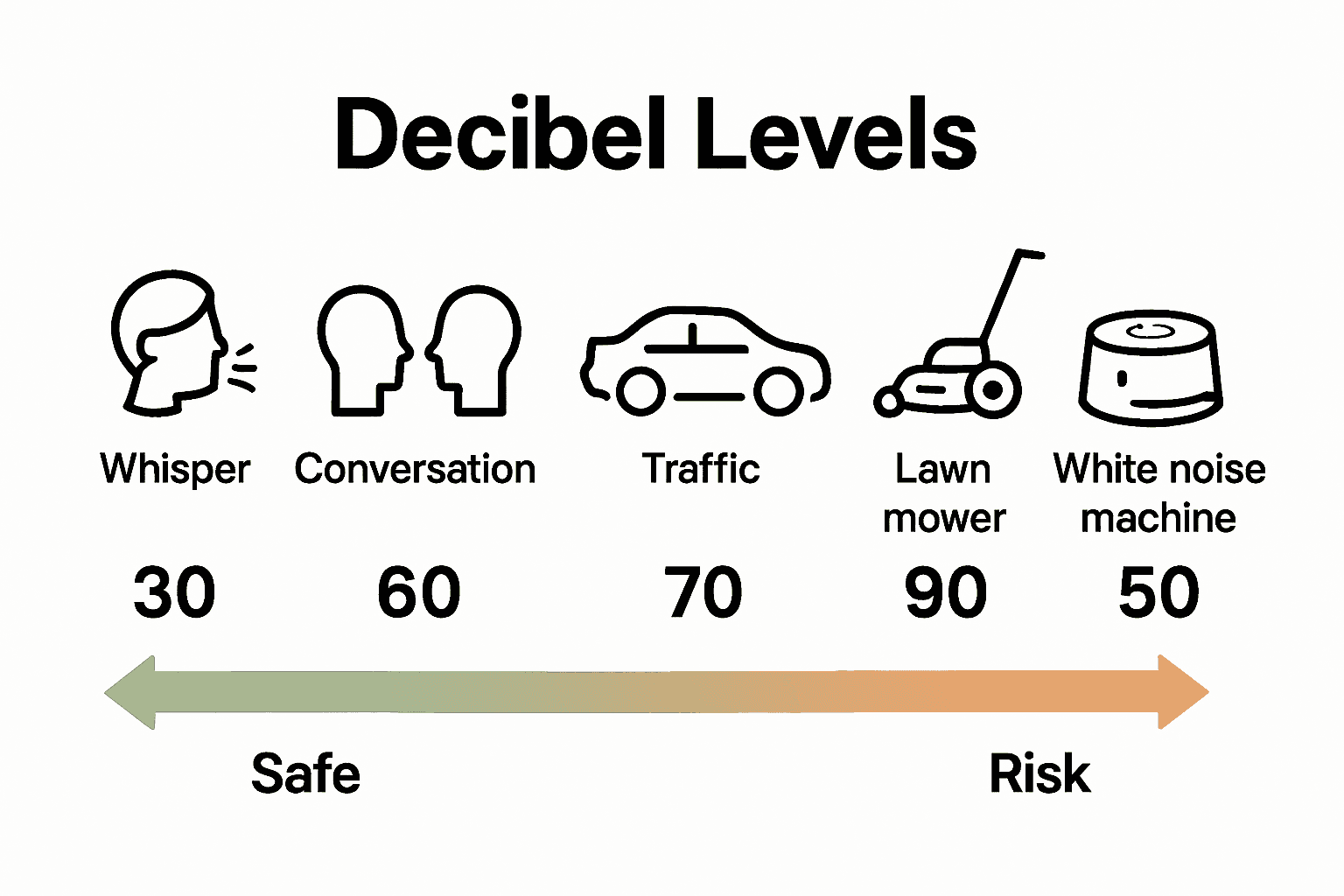
Here's a comparison of common sound levels and their potential impact on infants:
| Sound Source | Typical Decibel Level | Impact on Infants |
|---|---|---|
| Whisper | 30 dB | Safe, no risk |
| Quiet Conversation | 50-60 dB | Generally safe<br>Recommended max |
| Busy Traffic | 70 dB | Increased risk with long exposure |
| Lawn Mower | 90 dB | Unsafe<br>Potential hearing damage |
| White Noise Machine | 50-85 dB | Safe if <60dB<br>Risks if too loud |
How Noise Affects Infant Development
Beneath the surface of everyday sounds lies a complex world of neural interactions that profoundly impact infant brain development. Neural encoding - the brain's process of translating sound signals into meaningful information - is dramatically influenced by acoustic environments. Electrophysiological research reveals that background noise doesn't just create auditory interference; it actively disrupts the delicate neural pathways responsible for language learning and cognitive processing in infants.
Infants under 12 months are particularly vulnerable to acoustic disruptions. Their developing brains require clear, consistent sound patterns to establish critical neural connections. When consistent background noise intrudes, it can reduce the brain's ability to distinguish and process speech sounds, potentially creating long-term challenges in language acquisition and communication skills. The brainstem's response to sound becomes less robust in noisy environments, suggesting that excessive sound exposure might fundamentally alter how an infant's brain learns to interpret auditory information.
- Critical developmental windows are most sensitive to acoustic environments
- Background noise can reduce speech signal clarity
- Consistent noise may impair neural encoding of language sounds
Parents and caregivers play a crucial role in managing acoustic environments. Simple strategies like reducing television volume, using soft background music, and creating quiet zones can support optimal neural development. Understanding that an infant's auditory system is not just a passive receiver, but an active learning mechanism, emphasizes the importance of thoughtful sound management during these critical early developmental stages.
White Noise And Sound Machine Risks
White noise machines have become a popular tool for soothing infants, but potential acoustic risks lurk beneath their seemingly innocent hum. Research reveals a concerning trend: many commercial sound machines operate at volumes that could potentially harm developing ears. A comprehensive study found that approximately 64% of white noise machines tested exceeded safe sound levels when placed close to an infant, creating a hidden threat to auditory health.
The American Academy of Pediatrics provides critical guidance on sound machine usage. Their recommendations emphasize critical safety protocols: place devices at least seven feet from the crib and maintain consistently low volume levels. Acoustic exposure at close range can dramatically impact an infant's delicate hearing mechanisms. Moreover, prolonged exposure to loud white noise may create an unintended dependency, potentially interfering with natural sleep pattern development and sensory adaptation.
- 64% of white noise machines exceed safe sound levels
- Recommended placement: Minimum 7 feet from infant's crib
- Ideal volume: Below 50 decibels
- Risk: Potential hearing damage and sleep pattern disruption
Navigating sound machine usage requires careful consideration. Parents should invest in devices with adjustable volume controls, preferably with clear decibel indicators. Regular monitoring, strategic positioning, and volume moderation can transform these potentially risky devices into safe sleep companions. Remember, the goal is creating a soothing environment that supports healthy auditory and sleep development without compromising your infant's sensitive hearing system.
Practical Strategies To Protect Hearing
Protecting your infant's hearing requires a proactive and strategic approach that goes beyond simply turning down volume. Acoustic monitoring becomes a critical skill for caregivers, transforming sound management into an active form of developmental protection. Smartphone decibel meter apps provide an accessible, immediate way to track environmental noise levels, giving parents real-time insights into their baby's auditory landscape.
The most effective hearing protection strategies involve multilayered approaches. Positioning noise sources strategically - keeping white noise machines at least seven feet from cribs and maintaining volumes at or below 60 decibels - creates a foundational safety framework. Parents can implement targeted techniques like reducing device volumes once babies fall asleep, using intermittent rather than continuous sound, and creating deliberate quiet zones that allow developing auditory systems moments of acoustic rest and recovery.
- Use smartphone decibel meter apps for real-time monitoring
- Maintain white noise volumes at ≤60 decibels
- Position sound devices at minimum 7 feet from cribs
- Create intentional quiet periods throughout day
- Consider speech-in-noise testing for early detection
Beyond technological solutions, creating hearing-conscious environments involves holistic awareness. This means being mindful of cumulative noise exposure from televisions, conversations, household appliances, and external sounds. Regular acoustic assessments, periodic device volume checks, and maintaining an overall low-noise home atmosphere can significantly reduce potential long-term hearing risks for infants during their most vulnerable developmental stages.
Protect Your Baby’s Ears with Proven, Lab-Tested Tools
Are you feeling anxious about keeping your baby safe in a world full of unpredictable noise? This guide has shown just how quickly everyday sounds can surpass the safe decibel thresholds for infants, possibly affecting their hearing and development. Many caregivers worry about the hidden risks of white noise machines and struggle to verify which products truly offer gentle, reliable sound levels. Your desire to create a peaceful and healthy sound environment for your child is more important than ever, especially when the science behind decibel monitoring can feel overwhelming.
Let real innovation ease your worries. Our Acoustic Lab for Little Ears specializes in environment-specific picks, blending precise lab data with real-home testing so you don’t have to guess about safety. You’ll discover science-backed recommendations tailored for optimal infant hearing protection. Give your child the quiet comfort they deserve—visit https://babysoundmachines.me now to explore the tools and guides you need to make safer sound choices today.
Frequently Asked Questions
What decibel levels are safe for infants?
Experts recommend keeping sound levels below 60 decibels for infants. This is approximately equal to the sound of a quiet conversation and helps prevent potential hearing damage during critical development stages.
How do decibel levels affect infant development?
High decibel levels can disrupt neural encoding in infants, impacting the brain's ability to process speech and sounds. This can lead to long-term challenges in language acquisition and cognitive skills.
What are the risks of using white noise machines for infants?
Many white noise machines exceed safe sound levels when placed close to infants. It's essential to position them at least seven feet away from the crib and maintain volumes below 50 decibels to avoid potential hearing damage and sleep disturbances.
How can caregivers monitor sound levels around infants?
Caregivers can use smartphone decibel meter apps to monitor environmental noise levels in real-time. Keeping track of sound exposure helps ensure that the auditory environment remains safe for infants.

